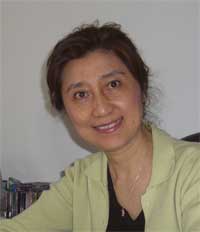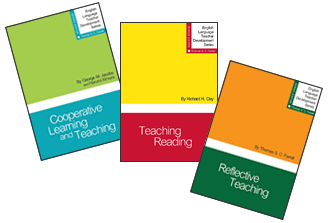Quick Tip: 5 Steps for Increasing Timed Writing Fluency
by Nick David
Audience: Intermediate to Advanced
One challenge many ESL writers face is not producing enough words during timed essays. When this occurs, it can negatively impact scores. But when writers learn to write more fluently in the allotted time, this can generate time for better planning, more in-depth content, and extended opportunities for revision. Here is a five-step process that has helped my students increase their writing fluency in timed essays.
1. Keep Track of the Number of Words Written
The first step is making writers aware of how much they write, on average, within a given amount of time (usually 30–45 minutes). This is easily done with word counts in computer-based writing, but this action can be more time consuming in paper essays. For paper essays, an estimate of word length can be found by counting the number of words per line, finding the average number of words over 3 or four lines, and then multiply the average word length per line by the number of lines written.
2. Focus on Fluency Over Grammatical Accuracy
Often students who write too few words are overly concerned about grammar. In order to encourage students to focus more on fluency instead, introduce a new length component into your grading rubric (usually giving full points for 250 words or more in a 30-minute essay), and reduce the weight of grammar points to incentivize students to focus on writing more fluently. You can adjust point values based on the proficiency levels of your students.
3. Track and Encourage Progress
In subsequent essays, continue to track word count, and give encouragement to students who successfully increase the number of words they write. By tracking the increase in length, students can make goals and take ownership of their own timed writing fluency.
4. Set Limits to Word Count if Needed
However, there are also limits to the importance of fluency in essays. If students become overly concerned about their essay length after they have passed the 350-word mark or more (in 30 minutes), and this concern is negatively impacting other areas of their writing, encourage students to return to other aspects of their essays that need work.
5. Reintegrate Essays With a Balanced Writing Approach
Once students are accustomed to writing more than the minimum length standard within the time allotted, return to the original rubric without the length requirement. In subsequent essays, encourage students to still focus on writing 250 words or more, but because they can now write more in a shorter period of time, teach them, for a 30-minute essay, to spend the first 5 minutes for prewriting, 20 minutes for writing, and the last 5 minutes for revising and editing. In this way, an increase in fluency buys students time to work on other areas of the timed essay writing process.
___________________
Nick David is an ESL teacher at Brigham Young University’s English Language Center, and is the assistant coordinator of BYU’s ESL Writing Lab.
TESOL Blogs
Interested in writing a blog for TESOL?
Contact
Tomiko Breland with your idea or for submission details.
Check out the latest TESOL Blogs:
|
Collaborative Teaching: Addressing ESL Teacher Concerns, by Judie Haynes
 Twelve years ago, I was interested in how collaborative teaching might work for our ESL program. I had read about ESL teachers who were “pushing into” the general education classroom to collaborate with classroom teachers and wanted to see for myself. After meeting with administrators and some classroom teachers, I had the advantage of being able to choose the teacher, the grade level, and the subject area for this experiment. I decided to push into Ms. Parson’s 3rd grade social studies class, where I had a group of intermediate English learners (ELs). Read More. Twelve years ago, I was interested in how collaborative teaching might work for our ESL program. I had read about ESL teachers who were “pushing into” the general education classroom to collaborate with classroom teachers and wanted to see for myself. After meeting with administrators and some classroom teachers, I had the advantage of being able to choose the teacher, the grade level, and the subject area for this experiment. I decided to push into Ms. Parson’s 3rd grade social studies class, where I had a group of intermediate English learners (ELs). Read More.
|
|
What Does It REALLY Take to Succeed? A Speaking Activity, by Alexandra Lowe
 At the NYS TESOL Applied Linguistics Conference at Columbia’s Teachers College earlier this year, much was made of Bloom’s Taxonomy and the importance of giving ESL students ample opportunities to practice “higher order thinking skills” (HOTS). At the NYS TESOL Applied Linguistics Conference at Columbia’s Teachers College earlier this year, much was made of Bloom’s Taxonomy and the importance of giving ESL students ample opportunities to practice “higher order thinking skills” (HOTS).
This caused me to take a fresh look at my own lesson plans to make sure I was including activities that challenged my intermediate-level adult ELLs to sharpen their critical thinking skills. Assured by several presenters at the conference that “ranking” activities promote critical thinking, I took what otherwise might have been a pedestrian discussion topic focused on “What success means to you . . . ” and turned it into a lively HOTS activity. Here’s how... Read More. |
|
Demystifying Myths About Leadership: An NNEST Perspective, by Yilin Sun, TESOL President
 Who can become a leader for a professional organization? As nonnative-English-speaking (NNES) educators, especially new teachers, many tend to say, “I’m just a graduate student,” or “I’m just a new teacher in the field. How can I take a leadership role with established professionals?” Who can become a leader for a professional organization? As nonnative-English-speaking (NNES) educators, especially new teachers, many tend to say, “I’m just a graduate student,” or “I’m just a new teacher in the field. How can I take a leadership role with established professionals?”
Let me share a personal story of how I got started. When I was a young graduate student at the Ontario Institute for Studies in Education (OISE)/University of Toronto in Canada about 29 years ago, my professors encouraged us to attend professional conferences. I remember my first: It was TESOL Ontario’s annual conference... Read More. |
|
Please Don’t Stop the Music! Using Music in a Writing Class, by Elena Shvidko
 As many of us know, music is a great tool for teaching English. It provides wonderful grammar exercises, opportunities for practicing listening skills, and topics for class discussions. Moreover, reflecting social values, ideologies, daily life, and human relationships, music provides an intercultural component to teaching the language. Music is also a source of authentic language use. Finally, it creates a more pleasant setting in classroom. As many of us know, music is a great tool for teaching English. It provides wonderful grammar exercises, opportunities for practicing listening skills, and topics for class discussions. Moreover, reflecting social values, ideologies, daily life, and human relationships, music provides an intercultural component to teaching the language. Music is also a source of authentic language use. Finally, it creates a more pleasant setting in classroom.
Unfortunately, music is rarely used in writing classes. Yet, there are various ways how music can enrich a writing classroom and provide an excellent ground for practicing important writing skills. Read More. |
TESOL Bookstore

Semesters Are Ending
It’s Time for Rest and Reflection
TESOL Has the Ideal Books to Help
Language Teaching Insights From Other Fields: Sports, Arts, Design, and More
Christopher Stillwell, editor
 Chapters offer practical tips from language teachers with extensive experience in other fields. It is a book full of surprises that translate into new ways of thinking about teaching and the classroom. Find out how a restaurant reviewer would critique an essay, how a martial arts master would facilitate language practice, how a bartender would create a supportive environment for learning, and much more.
Chapters offer practical tips from language teachers with extensive experience in other fields. It is a book full of surprises that translate into new ways of thinking about teaching and the classroom. Find out how a restaurant reviewer would critique an essay, how a martial arts master would facilitate language practice, how a bartender would create a supportive environment for learning, and much more.
English Language Teacher Development Series
Thomas S. C. Farrell, series editor

Short ● Practical ● Interactive
Buy Them All—20% OFF purchase of 3 or more
Dr. Thomas S. C. Farrell, series editor, is renowned for his work around the world in reflective practice and language teacher education and development. His ELTD series presents a theory-to-practice approach written in a jargon-free and accessible manner for all teachers of English (native and nonnative speakers of English, experienced and novice teachers). Each topic offers practical methods and reflective breaks that allow teachers to interact with the materials.